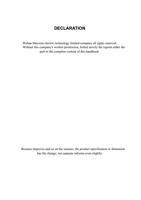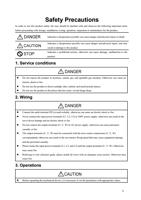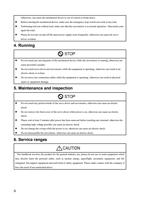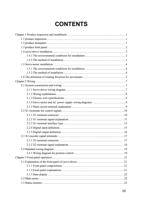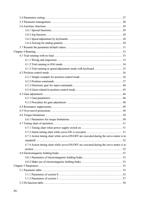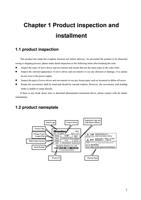
1. The gain of speed loop Kv
4.3 Gain adjustment
The speed loop gain Kv directly determines the response bandwidth of the speed loop. Under the premise that
there is no vibration in the mechanical system or noise, increases the speed loop gain, then the speed response can
speed up, and is better to follow the speed command. However, it is easy to cause a mechanical resonance if the
Kv is too large. The bandwidth of speed loop expresses as:
Speed loop bandwidth
(Hz)
=
1+ G
1+ JL / JM
× Kv (Hz)
If the setting inertia ratio of the load G is correct (G=JL/JM), then the bandwidth of the speed loop is equal to the
speed loop gain Kv.
2. The integral time-constant of speed loop Ti
The integral item of speed loop has an effect to eliminate static error of speed, and has rapid reaction to a
slight speed change. Under the premise that there is no vibration in the mechanical system or noise, reduces the
integral time constant Ti of speed loop, then the stiffness of the system increases, and reduces the static error. If
load inertia ratio is very big or a resonating factor exists in the mechanical system, and then must confirm that the
integral time constant is big enough, otherwise the mechanical system will be easy to cause resonating. If the
setting inertia ratio of the load G is correct (G=JL/JM), uses following formula to obtain the integral time constant
Ti of the speed loop.
Ti (ms)
≥
2π
4000
× KV (Hz)
3. The gain of position loop Kp
The gain of the position loop directly determines the reaction rate of the position loop. Under the premise that
there is no vibration in the mechanical system or noise, increases the position loop gain, then speeds up the
reaction rate, reduces the position tracking error and the positioning time is shorter. However, it is easy to cause a
mechanical vibration or over travel if the Kp is too large. The bandwidth of the position loop should be lower than
the bandwidth of speed loop. In general:
Position loop bandwidth (Hz) ≤ Speed loop bandwidth (Hz)
4
If the setting inertia ratio of the load G is correct (G=JL/JM), uses the following formula to obtain the gain Kp of
the position loop:
K
p
(1/
s)
≤
2π
×
Kv
(Hz)
4
47


